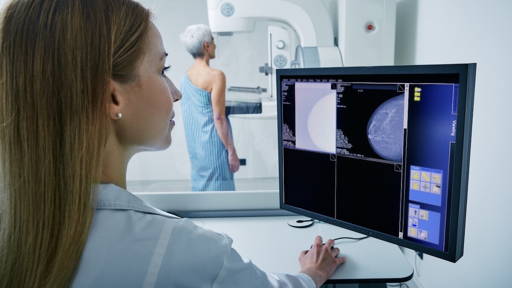Breast milk is the most natural source of food for newborn babies. Of course, it is important that the quality of the mother's milk is and remains up to standard. Something that the mother's body naturally regulates itself, but which is subject to 'external' factors. Think, for example, of medication such as painkillers. American scientists have developed a smart nursing compress, equipped with sensor technology, that allows real-time monitoring of breast milk quality.
Breastfeeding mothers often wear nursing pads, or breastfeeding pads, to catch leaking breast milk and protect clothing in case of congestion. The smart nursing pad now developed in the U.S., and still in a testing phase, makes it possible to monitor the quality of breast milk by analyzing the 'leaking milk'. According to the scientists, this is the first portable device that allows real-time biochemical analysis of breast milk.
Suction compress with sensor technology
To do this, the nursing pads are equipped with sensors and sensor technology that can analyze the breast milk collected by the nursing pads for the presence of acetaminophen. These are residues of pain medications such as, for example, paracetamol.
“Although acetaminophen is generally safe at recommended doses, overexposure is a major cause of acute liver failure in children. It remains the most common reason for liver transplants related to drug toxicity,” said Maral Mousavi, assistant professor of biomedical engineering at the University of Southern California (USC).
The team hopes the smart nursing compress can help parents make more informed decisions about breastfeeding after taking medications, such as optimizing the “pump and dump” strategy so that breast milk is discarded when drug levels are too high.
Also for other applications
The first smart nursing compress was developed specifically to detect residual pain medication in breast milk, but scientists are already working on other application areas. For example, to detect other drugs and biomarkers for assessing health.
Recently, scientists demonstrated another nursing compress with a built-in sensor designed to monitor glucose levels in breast milk. An application that could help parents manage their nutrition and address conditions such as gestational diabetes. “This technology has the potential to provide breastfeeding people with actionable health insights, supporting the health of both mother and child in ways never before possible,” Mousavi said.
Currently, the smart suckling compress can only analyze milk produced by natural leakage, meaning applications may be limited if there is little breast milk leakage. The compresses can also only be used once, so a new nursing pad is needed for each new test. The researchers are currently working to develop a version that analyzes pumped milk to provide a more accessible and convenient testing option for parents. The research was recently published in Cell Device









